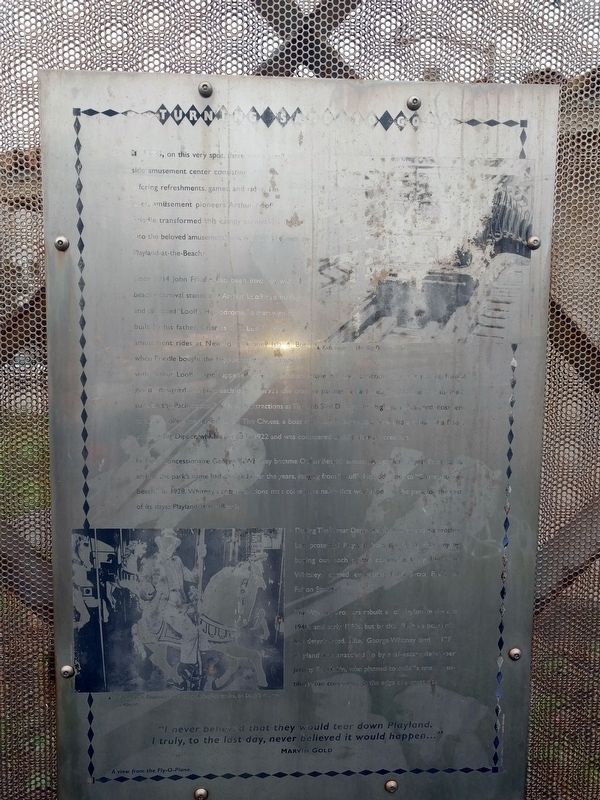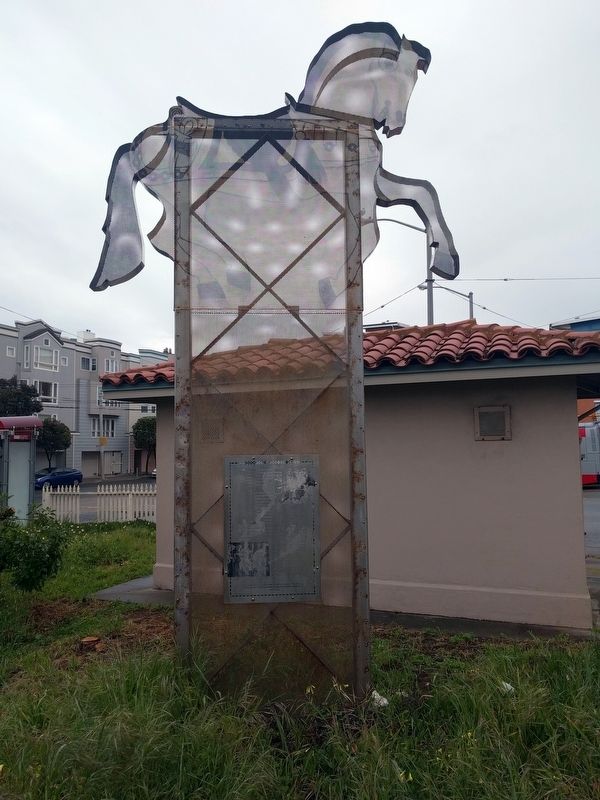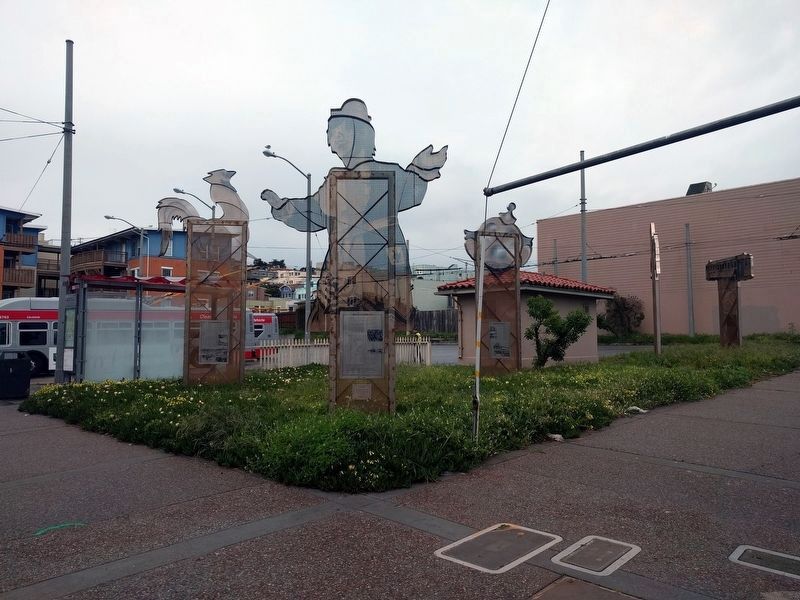Outer Richmond in San Francisco City and County, California — The American West (Pacific Coastal)
Turning Sand to Gold
In 1884, on this very spot, there was a small beachside amusement center consisting of [...] offering refreshments, games, and rides. [...] years later, amusements pioneers Arthur Looff and John Friedle transformed this campy carnival by the sea into the beloved amusement park eventually known as Playland-at-the-Beach.
Since 1914 John Friedle had been involved with the beach's carnival stands and Arthur Looff had managed and operated "Looff's Hippodrome," a merry-go-round built by his father, Charles I. D. Loof, [...] amusement rides at New York's Coney Island. But when Friedle bought the Hippodrome and teamed up with Arthur Looff, magic happened. Friedle spent a fortune on new attractions and Looff, a mechanical genius, designed and built each one. By 1921 the creative partners established the "grandest amusement park on the Pacific Coast," with such attractions as The Bob Sled Dipper, the "highest, fastest, and most sensational" roller coaster on earth; The Chutes, a boat ride with an incredible view and a splash of a finish; and The Big Dipper, which opened in 1922 and was considered Looff's ultimate creation.
In 1926, concessionaire George K. Whitney became Ocean Beach's amusement park manager. Prior to his arrival, the park's name had changed over the years, ranging from "Looff's Hippodrome" to "Chutes-at-the-Beach." In 1928, Whitney's public relations man coined the name that would identify the park for the rest of its days: Playland-at-the-Beach.
During The Great Depression, Whitney and his brother Leo protected Playland from the failing economy by buying out each of the concessions. By 1942, the Whitneys owned everything from Sutro Baths to Fulton Street.
The Whitney brothers rebuilt all of Playland in the late 1940 and early 1950s, but by the 1960s its popularity had deteriorated. After George Whitney died [...] 197?, Playland was snatched up by real-estate developer Jeremy Ets-Hokin, who planned to build "a small, beautiful, urban community at the edge of a great city."
"I never believed that they would tear down Playland. I truly, to the last day, never believed it would happen..."
Marvin Gold
Erected 1996.
Topics. This historical marker is listed in this topic list: Entertainment. A significant historical year for this entry is 1884.
Location. 37° 46.405′ N, 122° 30.586′ W. Marker is in San Francisco, California, in San Francisco City and County. It is in Outer Richmond. Marker is at the intersection of Cabrillo Street and La Playa Street, on the right when traveling west on Cabrillo Street. Touch for map. Marker is in this post office area: San Francisco CA 94121, United States of America. Touch for directions.
Other nearby markers. At least 8 other markers are within walking distance of this marker. Ticket to Ride (here, next to this marker); Hints of History (here, next to this marker); The City at Play (a few steps from this marker); A Memorable Muse (a few steps from this marker); Historical Site (within shouting distance of this marker); North Dutch Windmill (approx. 0.2 miles away); Roald Amundsen (approx. ¼ mile away); The Sutro Home (approx. 0.3 miles away). Touch for a list and map of all markers in San Francisco.
Also see . . . Playland (San Francisco). Wikipedia entry (Submitted on April 11, 2019, by Joel Seewald of Madison Heights, Michigan.)
Credits. This page was last revised on February 7, 2023. It was originally submitted on April 11, 2019, by Joel Seewald of Madison Heights, Michigan. This page has been viewed 203 times since then and 12 times this year. Photos: 1, 2, 3. submitted on April 11, 2019, by Joel Seewald of Madison Heights, Michigan.


